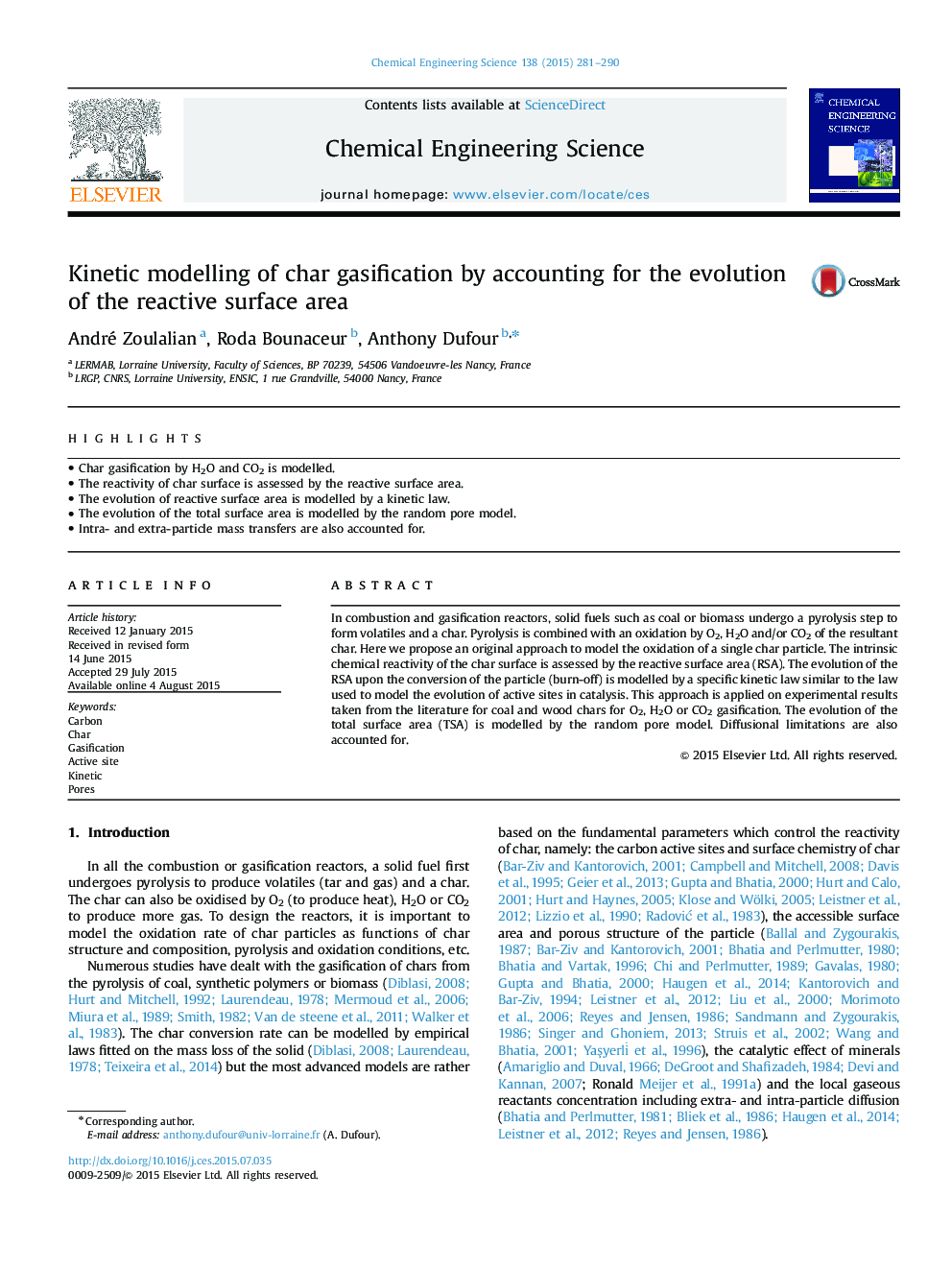| کد مقاله | کد نشریه | سال انتشار | مقاله انگلیسی | نسخه تمام متن |
|---|---|---|---|---|
| 154601 | 456846 | 2015 | 10 صفحه PDF | دانلود رایگان |
• Char gasification by H2O and CO2 is modelled.
• The reactivity of char surface is assessed by the reactive surface area.
• The evolution of reactive surface area is modelled by a kinetic law.
• The evolution of the total surface area is modelled by the random pore model.
• Intra- and extra-particle mass transfers are also accounted for.
In combustion and gasification reactors, solid fuels such as coal or biomass undergo a pyrolysis step to form volatiles and a char. Pyrolysis is combined with an oxidation by O2, H2O and/or CO2 of the resultant char. Here we propose an original approach to model the oxidation of a single char particle. The intrinsic chemical reactivity of the char surface is assessed by the reactive surface area (RSA). The evolution of the RSA upon the conversion of the particle (burn-off) is modelled by a specific kinetic law similar to the law used to model the evolution of active sites in catalysis. This approach is applied on experimental results taken from the literature for coal and wood chars for O2, H2O or CO2 gasification. The evolution of the total surface area (TSA) is modelled by the random pore model. Diffusional limitations are also accounted for.
Journal: Chemical Engineering Science - Volume 138, 22 December 2015, Pages 281–290
